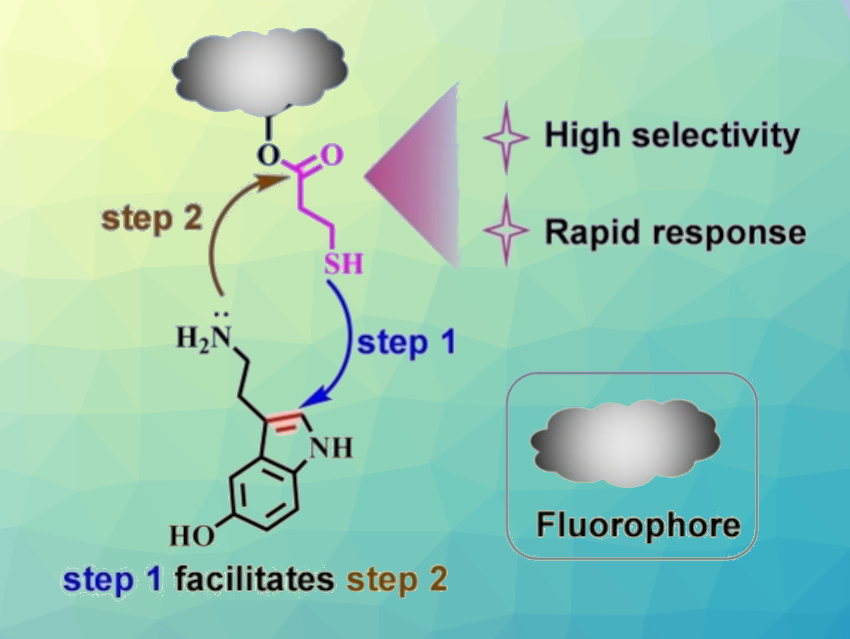Serotonin is highly relevant for diagnosis and treatment of depression, as well as drug development. To allow for easier studies this area, Weiying Lin, Guangxi University, Nanning, China, and colleagues have developed a fluorescent probe for imaging processes that is highly sensitive and selective toward serotonin. The team has introduced preliminary results obtained from cell and animal models.
The Mechanism of Depression
Depression represents a significant public health problem around the world. Current treatments are insufficient, primarily because it is difficult to determine the mechanism of depression. New studies indicate that depression is not exclusively caused by decreased serotonin levels.
To examine the role of serotonin in depression, the team aimed to to develop a highly selective molecular fluorescent probe. The problem with this is that serotonin’s structure and chemistry closely resemble other biomolecules, such as melatonin and tryptophan. However, precise analyses have revealed subtle differences in reactivity.
A Selective Probe
The team designed a reactive group (3-mercaptopropionate) that can react very selectively with serotonin via a cascade reaction. They attached this reactive building block to a fluorescent dye (a dicyanomethylene-benzopyran derivative).
Attachment of this “appendage” initially switches the probe off. If it encounters serotonin, one section reacts first. (The SH group of the reactive building block binds to a double bond in serotonin in a thiol-ene click reaction.) Afterward, facilitated by proximity, a second bond is formed (in a nucleophilic reaction between an amino group in serotonin and a carbonyl group in the reactive building block). As a result, the building block is removed from the fluorescent dye and its fluorescence is switched on. The probe selectively and sensitively indicates the presence of serotonin, even inside cells.
Fluorescence Imaging
The team used the probe to image a neuron cell line that can be made into a model for depression by the administration of corticosterone. It turned out that the serotonin levels in the normal and “depressed” cells were nearly equally high. However, the depressive cells were able to expel significantly less serotonin in response to stimulation. Administration of the current antidepressive drugs (serotonin reuptake inhibitors) slightly increased the release.
According to a hypothesis, mTOR, a biomolecule that plays a role in many cellular signaling pathways, could be related to a reduced ability to release serotonin. The team observed that with mTOR activators, the serotonin release in the depressive cells was significantly increased, while mTOR inhibitors reduce serotonin release from the normal cells. The results could be confirmed in neuron and mouse models.
These imaging studies suggest that the serotonin level in the model for depression is not the primary factor. The ability of neurons to release serotonin seems far more critical. This ability correlates strongly with the activity of mTOR, which could point the way to advancement in the treatment of depression.
- Development of a Fluorescent Probe with High Selectivity based on Thiol‐ene Click Nucleophilic Cascade Reactions for Delving into the Action Mechanism of Serotonin in Depression,
Lizhou Yue, Huawei Huang, Weiying Lin,
Angew. Chem. Int. Ed. 2024.
https://doi.org/10.1002/anie.202407308




